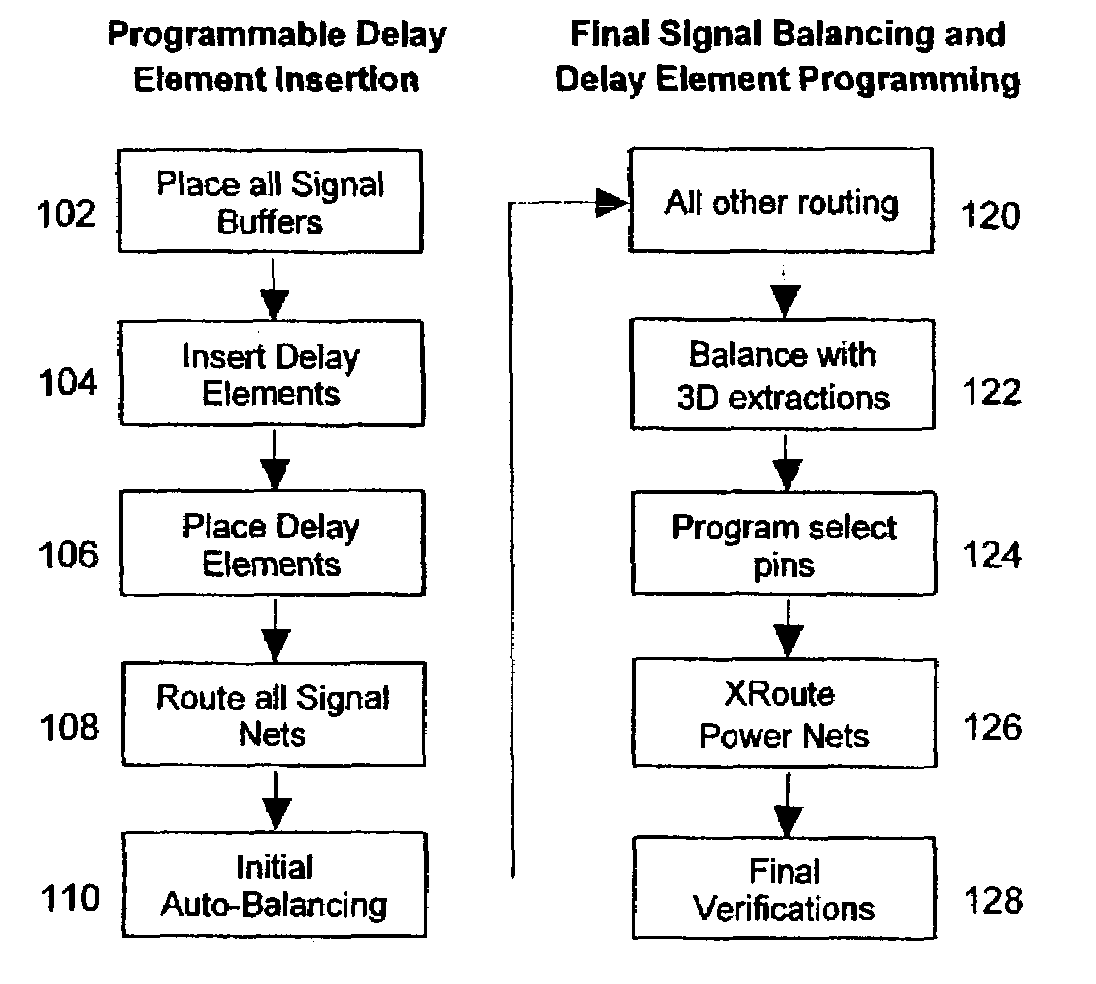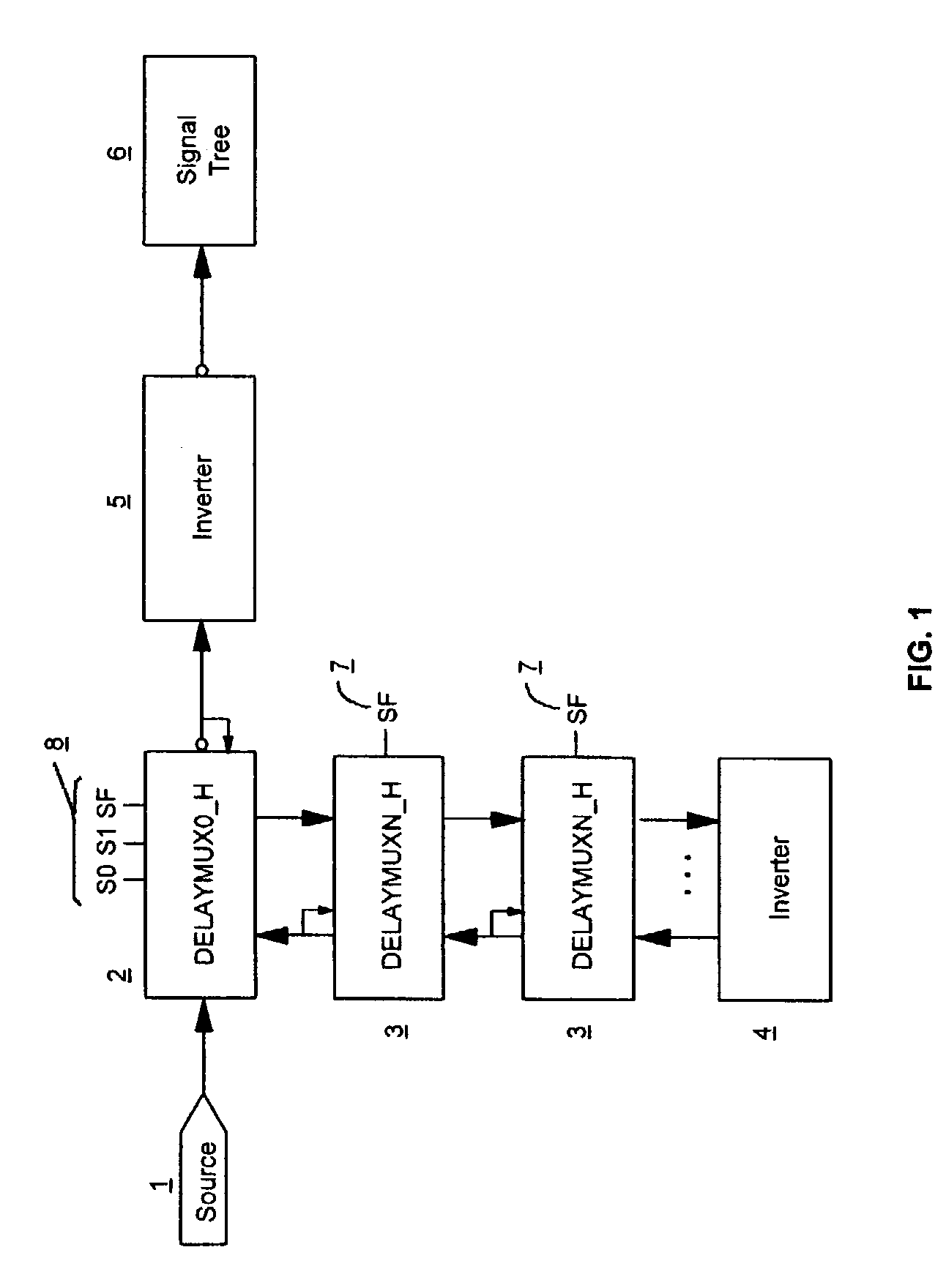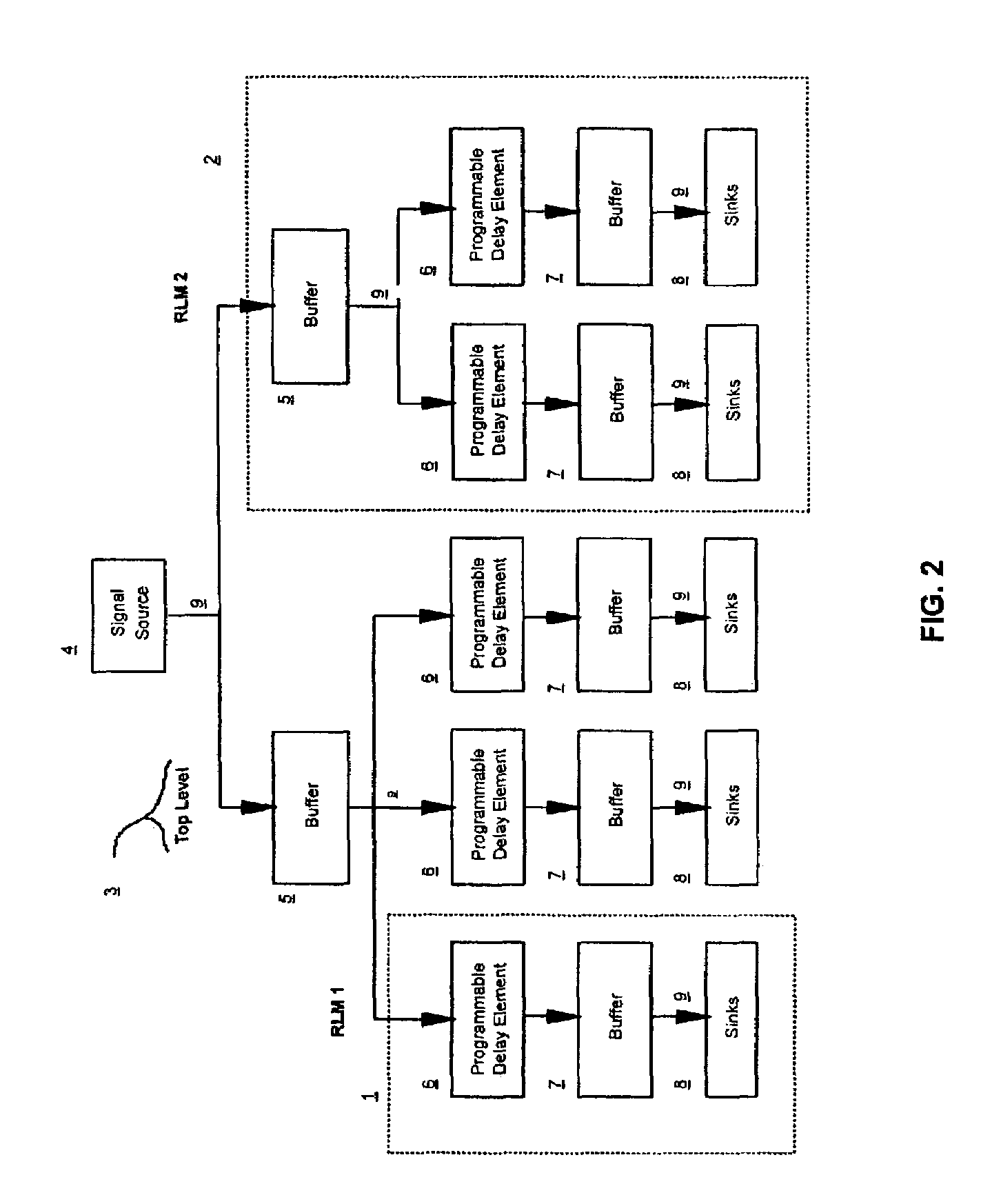Programmable delay method for hierarchical signal balancing
a hierarchical signal and delay technology, applied in the field of signal balancing in integrated circuits, can solve the problems of signal to be rebalanced, complicated rlm reuse between individual designs, increased turn around time (tat), etc., and achieve the effect of reducing manual design efforts and reducing turn-around tim
- Summary
- Abstract
- Description
- Claims
- Application Information
AI Technical Summary
Benefits of technology
Problems solved by technology
Method used
Image
Examples
Embodiment Construction
[0025]Traditionally signal balancing in hierarchical designs is performed by one of two main approaches:
[0026]1) Designing each RLM to have a single common signal latency.
[0027]There are two primary drawbacks to designing / planning RLMs to have a common signal latency. First, achieving a specific latency target is difficult and typically requires extensive manual effort increasing design turnaround time. Second, RLM reuse is complicated since every design has varying signal latency requirements.
[0028]2) Flattening (i.e. removing all hierarchy) from the design in order to process a balanced signal as a regular design.
[0029]Loses all the advantages of the hierarchical design approach including allowing several designers to process separate design components in parallel. The software speed up of processing smaller design segments at a single time is lost. In addition, tight intra-RLM skew is reduced which is one of the most important characteristics of a hierarchical signal.
[0030]In thi...
PUM
 Login to View More
Login to View More Abstract
Description
Claims
Application Information
 Login to View More
Login to View More - R&D
- Intellectual Property
- Life Sciences
- Materials
- Tech Scout
- Unparalleled Data Quality
- Higher Quality Content
- 60% Fewer Hallucinations
Browse by: Latest US Patents, China's latest patents, Technical Efficacy Thesaurus, Application Domain, Technology Topic, Popular Technical Reports.
© 2025 PatSnap. All rights reserved.Legal|Privacy policy|Modern Slavery Act Transparency Statement|Sitemap|About US| Contact US: help@patsnap.com



